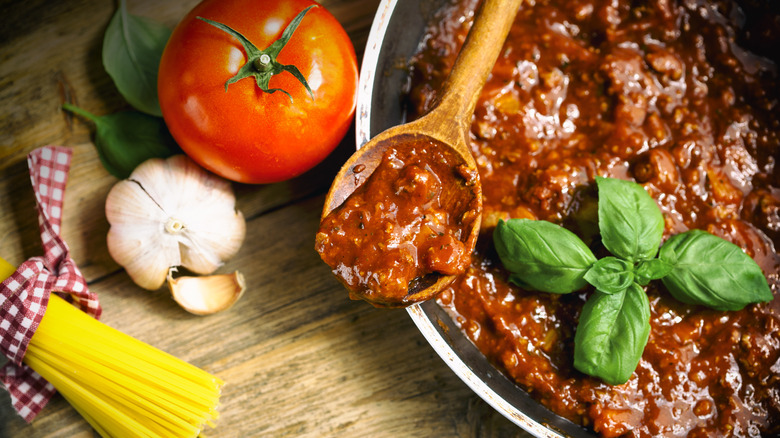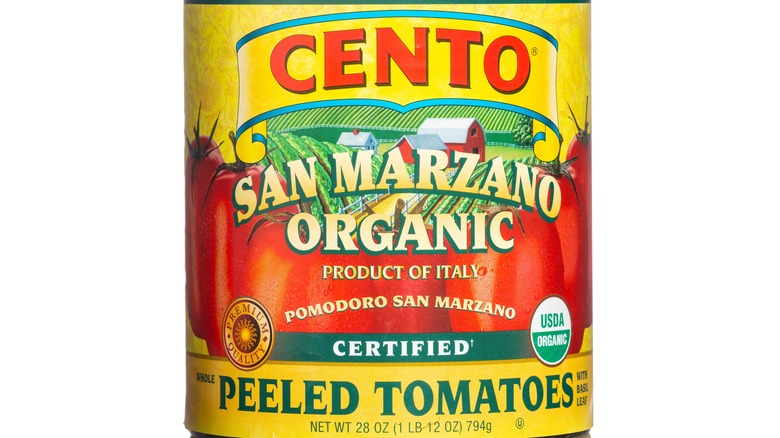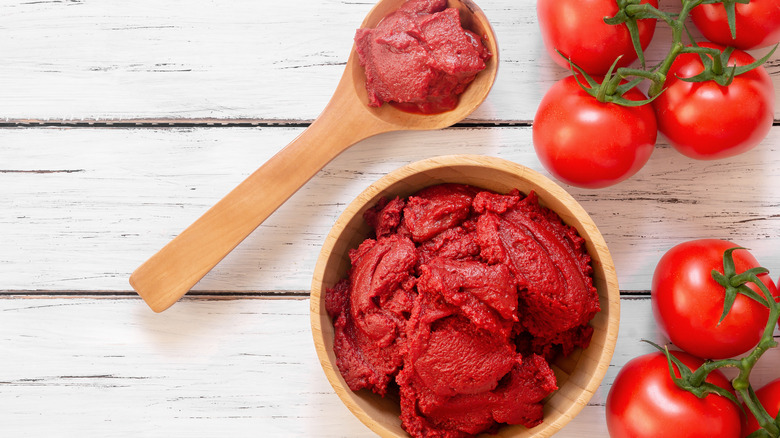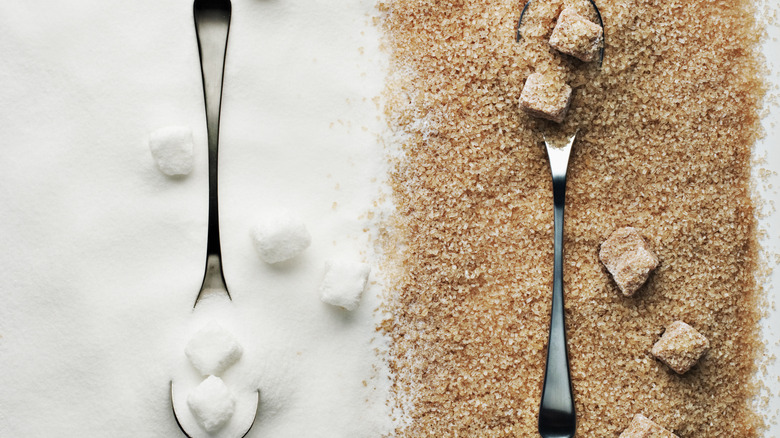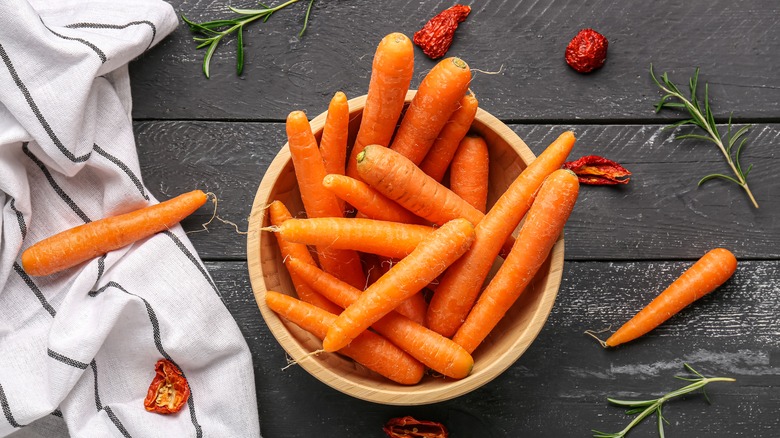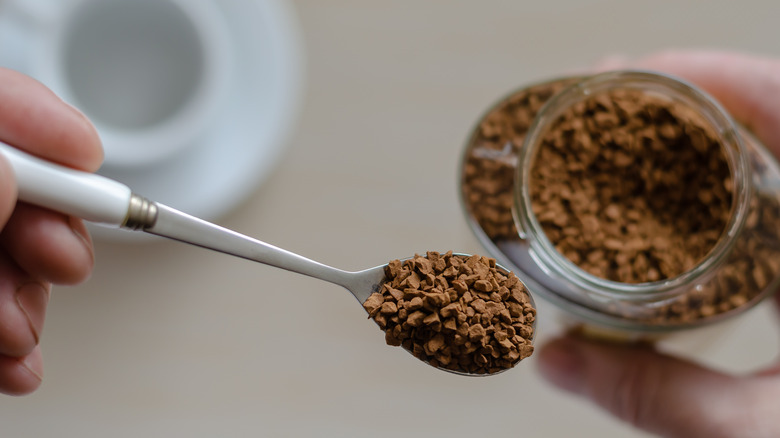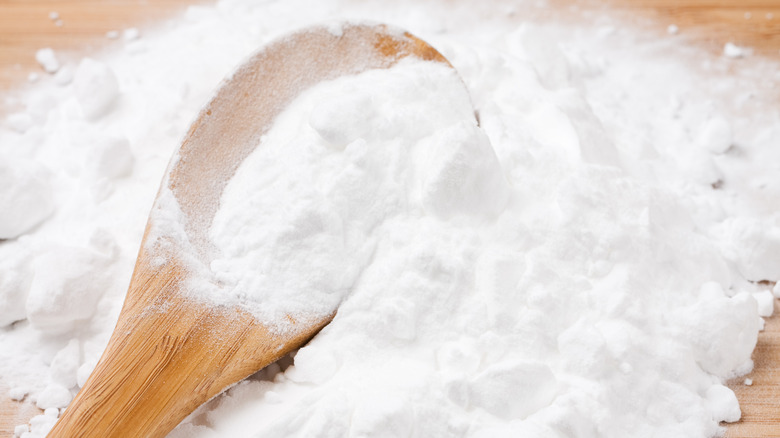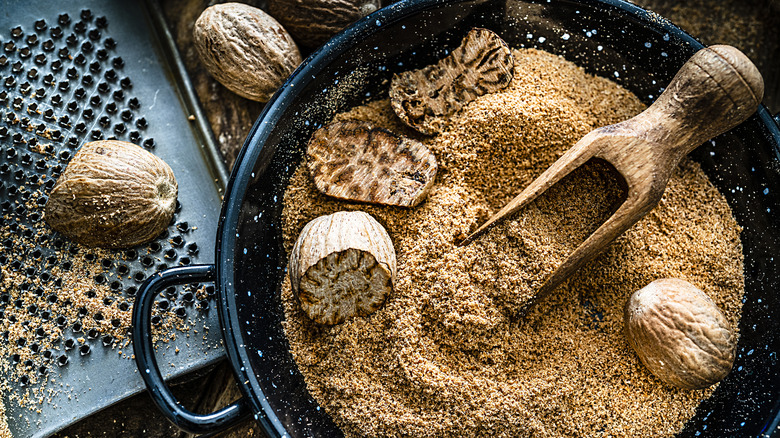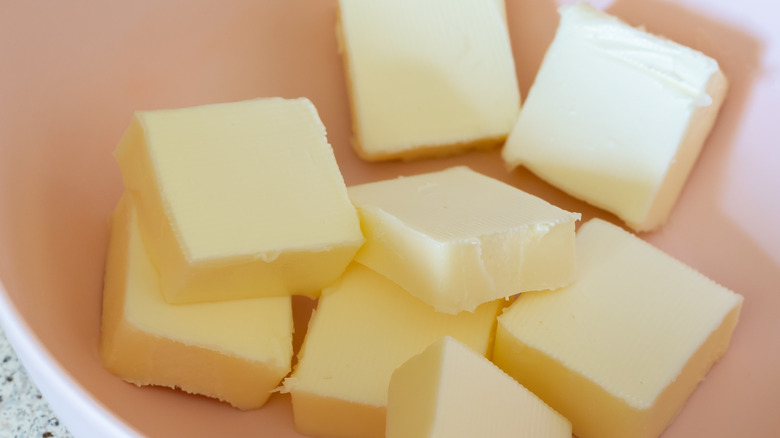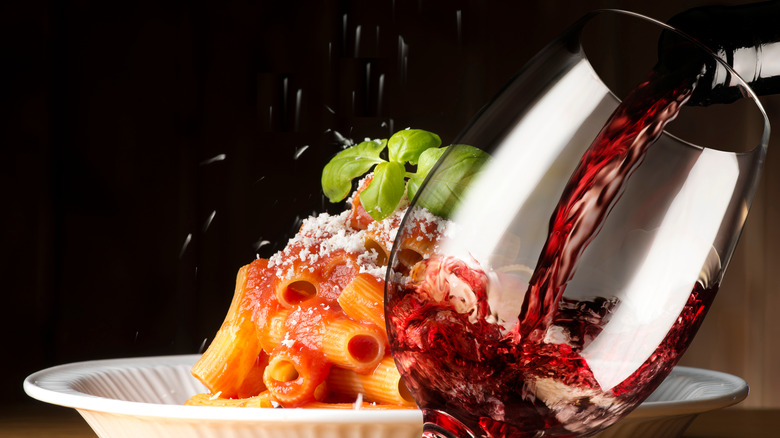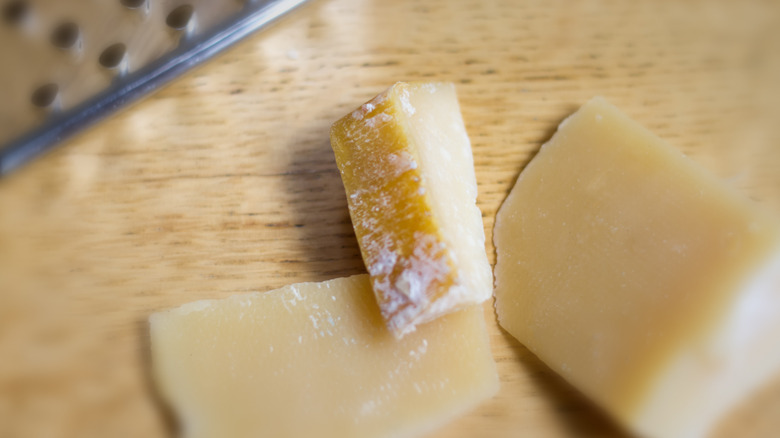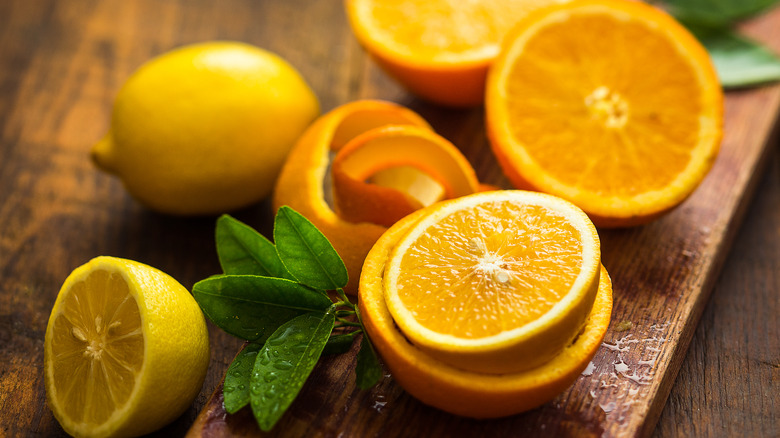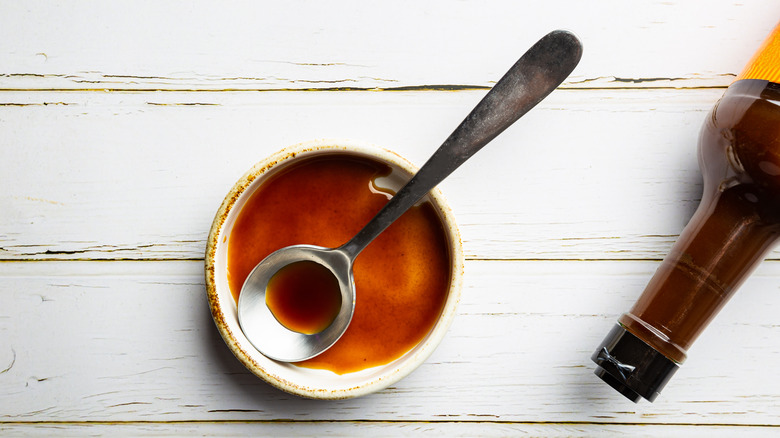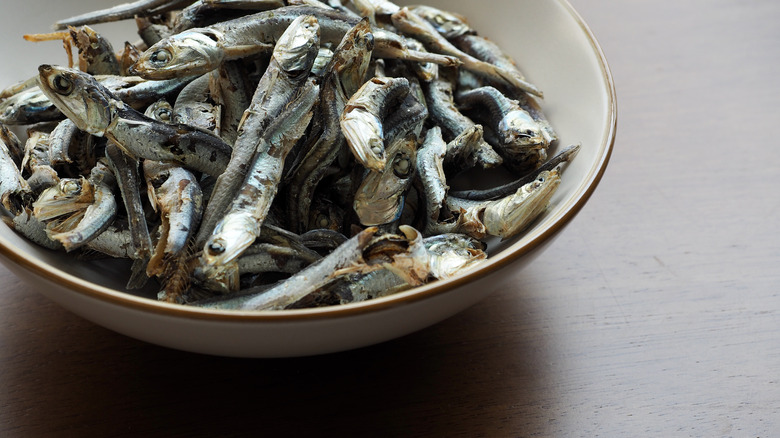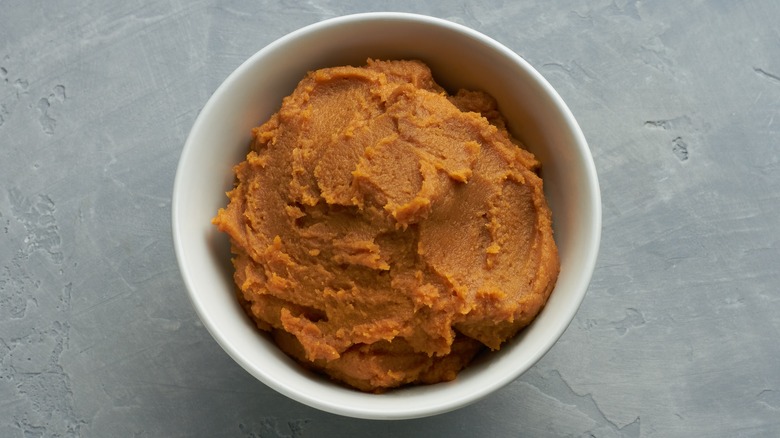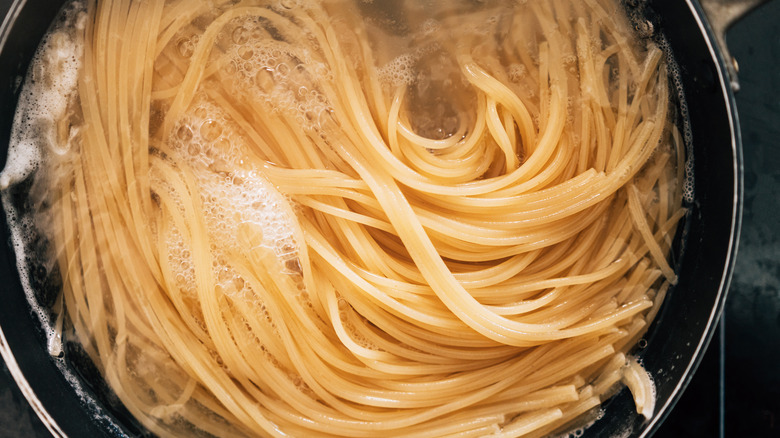Secret Ingredients You Should Be Using In Your Spaghetti Sauce
We may receive a commission on purchases made from links.
Making spaghetti sauce is an essential skill for any chef. From pizza to pasta to dipping, it is as versatile as it is delicious. Yet, somehow, it is both simple and complex to master the perfect recipe. Sure, anyone can whip up a basic spaghetti sauce, but getting the nuanced flavors just right takes some careful seasoning and care.
Everyone knows basic spaghetti sauce seasonings like basil, garlic, salt, pepper, Italian spices, olives, and spicy peppers. Still, there are lots of secret ingredients you can use to make spaghetti sauce truly amazing. These hidden ingredients are what add depth and complexity to the sauce. They also enable you to balance out disproportionate elements and save sauces that have gone astray. Keep reading to learn the secret ingredients you should be using in your spaghetti sauce so that the next time you make a batch, it turns out better than it ever has before.
My basic family recipe for "red gravy" comes from a long line of proud Italians. While we have made some minor changes throughout the years, many of the tips below come from generations of experience. I also considered some top chef recommendations and recipes online, but either way, they will change how you make spaghetti sauce forever.
Imported canned tomatoes
One of the things my family stresses most about making Italian food is that you need to buy Italian ingredients. Whether it's ricotta, fresh mozzarella, or tomatoes, Italian is best. As a result, any authentic spaghetti sauce starts with imported San Marzano canned tomatoes. Sure, you can use fresh tomatoes, or any kind of canned tomatoes for that matter, but something about the imported ones adds a touch of authentic flavor. Maybe it's because marinara was first created in Italy and based on its regional foods, or perhaps it's just nostalgic. Regardless, something in the details ensures that imported canned tomatoes start you off with the perfect base for spaghetti sauce.
Imported Italian tomatoes are typically relatively easy to buy in local grocery stores. You may not have a huge selection, but you can usually find at least one brand available. If not, they can easily be found in Italian markets or purchased through online vendors. While this may seem like an extra step, you'll be surprised at how big of a difference this simple detail can make.
Charred tomato paste
The best, most authentic spaghetti sauces contain a smoky element brought about by char. While there are several ways to achieve this robust flavor, the easiest involves tomato paste. At the very beginning, before you add tomatoes, water, or anything else, coat the bottom of your pot with a thin layer of tomato paste and a few drops of olive oil. Then, allow it to cook on medium-low heat until it caramelizes and develops char. Only then should you proceed with the recipe as normal and add all the other ingredients on top. While the sauce cooks, the charred bottom will add flavor throughout. It will also start to flake off. Smaller pieces will integrate into the sauce and give it the desired charred taste, and you can easily extract larger pieces.
If you forget to start with tomato paste, all is not lost. You can still get a hint of the desired smoky flavor by using another old trick. Maybe you've heard an authentic Italian tell you not to stir spaghetti sauce too much and haven't thought much of it, but there's an excellent reason. When you leave the marinara to simmer slowly, without stirring, a thin layer of ingredients forms along the top of the sauce, spreading up the pot walls. Gradually, it starts to develop the same charred taste, but only if you don't stir it back into the sauce too soon. So, resist the urge, and it'll pay off in terms of flavor.
Sugar
Tomatoes, as we all know, are pretty acidic. While acid is an essential part of cooking, sometimes it can become overpowering in spaghetti sauce. Fortunately, sugar is the ideal solution. Its sweetness balances out acidity in an expert fashion, transforming a harsh marinara into the perfect balance of savory and sweet.
When mixing sugar into your tomato sauce, start slowly and taste it after each addition. It is a lot more work to counterbalance an overly sweet sauce than it is to add more sugar. You can use any kind of sugar you happen to have in your kitchen, but brown sugar and raw sugar are often chef favorites. Or, if you find yourself out of sugar, you can substitute another sweetener like maple syrup, agave, or honey. They all have the same calming effect on overly acidic tomatoes.
Sugar may not be much of a secret ingredient anymore, but just because it's catching on and gaining popularity doesn't mean we have all been turned on to its benefits yet. If you've never tried adding a spoon or two of sugar to a basic tomato sauce recipe, prepare yourself to be wowed. This is one of those ingredients that may seem counterintuitive at first, but it sure makes a world of difference.
Carrots
Carrots are another outstanding ingredient that can be used to balance acidity in canned tomatoes and spaghetti sauce. Carrots are alkaline rich, making them the perfect vegetable to balance overly acidic pH levels. When you add a tablespoon or 2 of finely shredded raw or sauteed carrots to your sauce, it reduces the unwanted tangy, sour taste that accompanies overly acidic spaghetti sauce. For a super smooth sauce, blend carrots into a puree before adding them. Whichever method you use, add slowly and taste as you go. Carrots are pretty sweet, so you don't want to overdo it. A little extra sweetness is good, but too much, and you'll be sorry.
If sweeter spaghetti sauce isn't your thing, Giada De Laurentiis' carrot trick has you covered. Instead of adding shredded or puréed carrot to her sauce, she adds two small peeled carrot sticks. What's great about this method is that the carrots can easily be removed after they absorb the acidity from the other ingredients. As a result, your sauce gets the right balance without the carrots contributing a lot of sweetness.
Instant coffee
One of the most surprising secret ingredients on our list is instant coffee. Shockingly, it adds depth to the overall flavor of spaghetti sauce. The slightly bitter taste of coffee also accentuates sweet elements in the sauce, like sugar or carrots. When used in small amounts, it won't make your sauce taste like coffee, either. A single teaspoon of instant coffee diluted in water or stock is the perfect amount for a full batch of sauce. You can also transform store-bought sauce that lacks flavor with this hack.
If you are a coffee connoisseur, you'd probably rather die than stoop to using instant coffee. If that's the case, you can always use a few tablespoons of regular brewed coffee. There are actually some pretty good instant coffee options on the market, but if you refuse, regular drip coffee will do the trick. Also, if you know a jar of instant coffee will just go to waste in your kitchen, don't bother. Use what you have around unless, of course, it is flavored. Then, you'll want to steer clear.
Baking soda
Adding baking soda to homemade spaghetti sauce is a fantastic way to balance out acidity and create an even texture. Baking soda is alkaline by nature, so it is exactly what you need to reduce bitterness or too much of a tangy taste. As opposed to other ingredients used to balance acidity in spaghetti sauce, baking soda isn't sugary, so it's perfect for anyone who prefers a more savory-tasting finish without any sweetness.
If you want to try this option, two pinches of baking soda is all that is needed. Add it to your sauce once it starts simmering, and stir it in while it fizzes. Then, leave it to cook for a while before tasting. That way, it gets a chance to blend in and produce the desired result. So far, we have given you several beneficial ingredients for balancing acidity in spaghetti sauce. While they all work wonders, start by using only one or two of the methods at a time. Don't use them all at once, or your sauce will become too busy, and the flavor will quickly get off track.
Nutmeg
Nutmeg is the key to boosting earthiness and adding a touch of nuttiness to your spaghetti sauce. Nutmeg also has a slightly sweet flavor, which we know goes great with acidic canned tomatoes. Overall, it accentuates the other ingredients in the sauce and adds complexity. Even if you can't taste the nutmeg individually, it has a profound effect on the rest of the mix. Many classic Italian tomato sauces use nutmeg, so you've probably tried it before without noticing.
Approximately three dashes or ¼ teaspoon of nutmeg is plenty for a jar of tomato sauce. If you are making a large batch, add a bit more for good measure. While the flavor should be subtle, you still want it to make the other ingredients shine, so feel free to play around with the quantity until you get it just right. If you add too much nutmeg, it won't ruin your sauce. Just make a note of it so you can use less next time. Or, add some extra garlic. It is potent enough to mask other flavors like nutmeg with ease.
Butter
In the South, there is a very common saying: Butter makes everything better. Astonishingly, this saying even applies to spaghetti sauce. Butter is rich, creamy, and full of fat, so why wouldn't you want your sauce to have a bit of its essence? Additionally, it blends well with all of the ingredients and spices in the sauce, not just the tomatoes.
The easiest way to incorporate butter into your sauce is to saute your onions in it before adding it all to the sauce. Olive oil is commonly used, but butter is better. Plus, when you sauté butter, it develops a richer taste and seeps into the onions. If you are making spaghetti sauce with fresh tomatoes, not canned, go ahead and add them to the butter and onion, too. They all cook down together nicely, leaving you with a velvety, delicious sauce for your tasty spaghetti in the end.
Red wine
Spaghetti sauce and red wine are a famous pair. In fact, we wouldn't be surprised if you have enjoyed a glass of red wine with a plate of pasta many times before. The flavors obviously go together well, so why not skip the middleman and combine them from the start? The rich, peppery taste of many red wines enhances the other elements found in red sauce, leading to deep, delicious flavor throughout. Plus, depending on the cooking wine you choose, it either adds some sweetness or a dry element, both of which are great for marinara.
About 1 or 1½ cups of full-bodied red wine should be the perfect amount for spaghetti sauce. It is enough to add flavor and not so much that your sauce becomes a watery mess. You may want to reduce how much water you put in to stay ahead of it, but even if you don't, the liquid should evaporate while cooking. If you're worried about making your sauce too boozy, don't worry. All of the alcohol cooks off while the sauce simmers. Only the complex taste you want is left behind. Go ahead and pour yourself a glass for drinking, too. We won't judge.
Parmesan rinds
Blocks of fresh Parmesan have a thick rind. Often, the rind gets thrown away when the rest of the cheese has been grated. However, it is packed with lots of savory, umami flavor, making it a wonderful addition to spaghetti sauce. Many Italians know this trick and have been using it for as long as they can remember, so you know it's a good one. If you don't normally keep fresh Parmesan on hand, this gives you another reason to do so, and once you see how delicious it is in pasta sauce, you'll wonder what took you so long to try it.
As far as secret spaghetti sauce ingredients are concerned, this one is really easy, and it just makes sense. Who doesn't want a bit of cheesy goodness in their sauce? Simply toss large chunks or a whole Parmesan rind into the pan while your sauce simmers, and it will release flavor gradually. It's impossible to mess up a sauce with a Parmesan rind, no matter how much you use, so don't hold back. Remove the rinds when your sauce is done cooking, and you're all set.
Citrus
If you aren't careful with proportions, spaghetti sauce can get bogged down with the abundance of savory ingredients found in a typical recipe. For the most part, you want lots of umami and warmth, but a light element helps balance the components to perfection. The best ingredient to add for a brighter taste is lemon zest. It's fresh and tart and adds a subtle aftertaste that lingers on the tongue in all the right ways. To ensure the flavor shines through, wait until just before it is done to dust your sauce with lemon zest. If you put it in too early, the tomatoes will quickly overpower it.
While still high in sugar, orange juice is a good substitute for balancing acidity without adding refined sugar. Juice from half of a fresh orange is ideal, but a shot of orange juice works, too. Regardless, the citrus balances out the spaghetti sauce's acid while adding a bright, tangy taste. It also brightens the flavors, just like lemon zest, so only use one of the two.
Worcestershire sauce
Whether you can pronounce it or not, Worcestershire sauce is an easy, effective way to load up spaghetti sauce with umami flavor. It is salty, tangy, and has lots of potent vinegar, all of which cut through tomatoes to create a soothing, savory flavor. If your palate is refined enough to pick up on the sometimes subtle metallic taste of canned tomatoes, Worcestershire sauce could be your new best friend. Its intense aroma and taste easily mask any unexpected flavors, leaving you with all the good stuff and none of the bad.
The main drawback to this ingredient is that it is rarely vegetarian because it generally contains anchovy paste. If this doesn't concern you, no big deal. However, if you or anyone you are feeding has a plant-based diet, including it could be a deal breaker. You can find vegetarian Worcestershire sauces from some health food stores and through various online purveyors. Still, chances are good that the one you have in your cabinet isn't vegetarian-friendly. So don't accidentally add it without thinking first.
Anchovy paste
Anchovy paste is considered a hidden ingredient in spaghetti sauce because most people have no idea it is in there. You do not need much, but even a small amount creates a rich, salty base. You'll find countless tomato sauce recipes that call for anchovy paste online, so the secret is out. However, many home chefs have yet to try using this simple ingredient in their sauces. We know anchovies aren't super popular in the United States, except maybe with Caesar salads, but using some in a sauce is different. Anchovy paste is by no means a main ingredient, so it just blends into the background.
When making your sauce, use anchovies or anchovy paste sparingly. You only need about a teaspoon of anchovy paste or two anchovy filets for every two 28-ounce cans of tomatoes. The flavor may not spread through immediately, but it will grow and deepen while all the ingredients simmer together. Of course, if you decide to use anchovies in your spaghetti sauce, it will no longer be vegetarian or vegan, so don't try to serve it to your plant-based friends and family. Everyone else is sure to love it, though.
Miso paste
The final umami-enhancing ingredient on our list is miso paste. Prized for its complex umami flavor, miso has been an essential part of Japanese cooking for more than a thousand years. While it is rarely paired with Italian cuisine, it creates the perfect blend of umami, salty, and sweet in marinara. Made from fermented soybeans, miso paste has a potent toasted, funky, savory taste that instantly improves the flavor of tomato sauce. It is much richer and deeper than other soy products, yet it still mixes in nicely. Honestly, miso paste goes with almost anything, so it's not really surprising that it adds depth to spaghetti sauce, too.
Unlike anchovy paste and Worcestershire sauce, most miso pastes are vegetarian and vegan, making it a great alternative to other umami boosters that contain meat. There are few exceptions to this as some contain fish, but for the most part, they're safe for plant-based diets. Considering how versatile miso paste is, it's also nice to have one stocked at all times, so definitely give this secret ingredient a try, even if you are a meat eater. Just add a tablespoon, stir, and savor the results.
Starchy pasta water
Starchy pasta water is the final ingredient needed to make your spaghetti sauce reach its full potential. While it doesn't necessarily go directly into your sauce, it makes the perfect binder for the sauce. Basically, adding starchy water to your drained pasta helps the sauce stick to the noodles. If you salt your water, as you should, it also adds a touch of extra salt to the noodles themselves.
After cooking your noodles, set a cup of milky-colored water aside before straining. Then, add a small amount to the pasta when mixing in the sauce. Depending on how much pasta you're making, anywhere from ¼ cup to ¾ cup should be plenty. If you accidentally dump out your pasta water before saving some, you can heat up some cornstarch or semolina flour and water to achieve a similar effect. After all, semolina flour is what's used to make most pasta doughs.
Pasta water is also useful if your spaghetti sauce becomes too thick. Plain water works fine, but starchy water is even better. Just be mindful that too much extra starch will have a thickening result, which is the opposite of what you want to achieve. Remember the excess salt in the pasta water, too.

